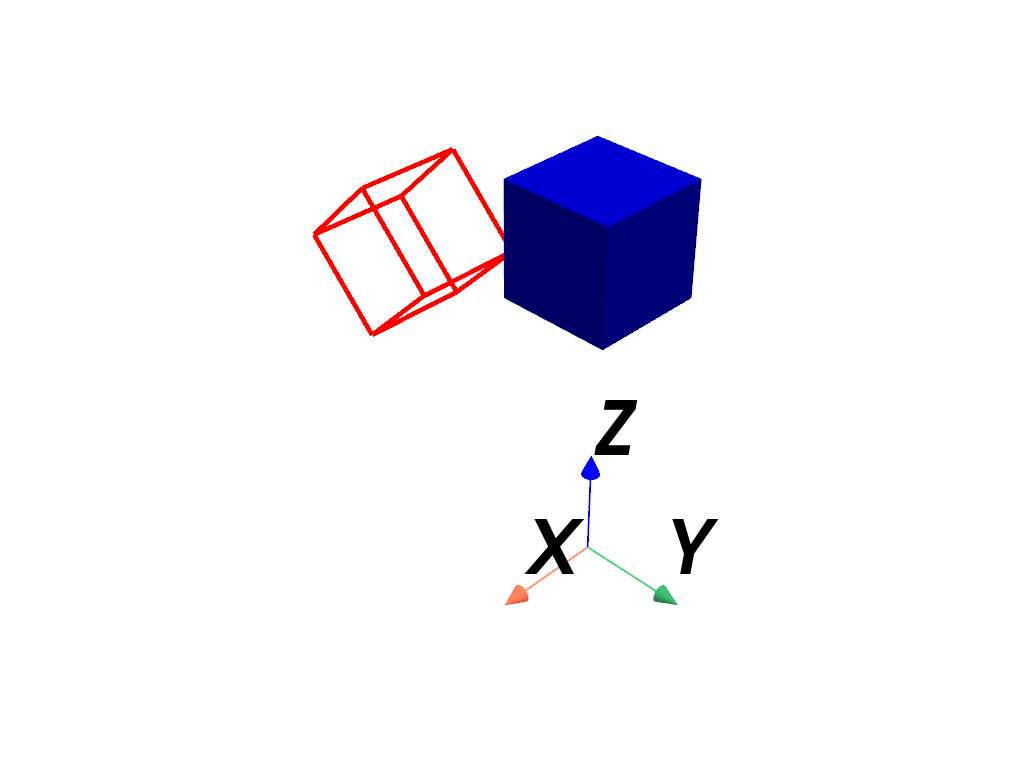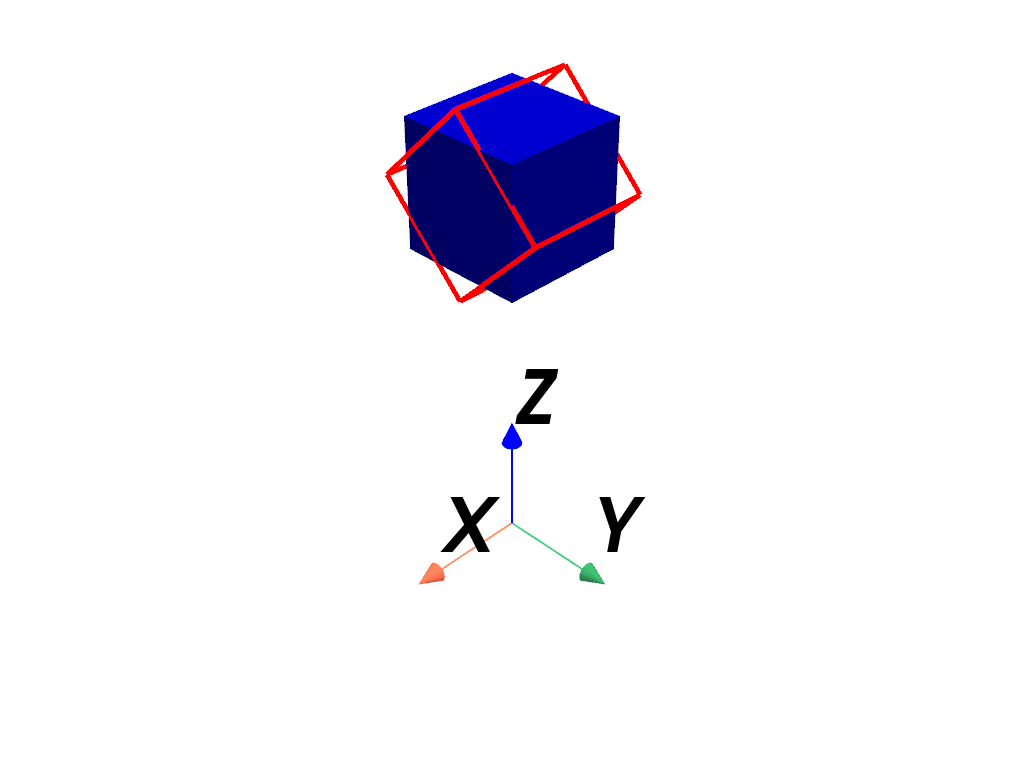pyvista.Prop3D.orientation#
- property Prop3D.orientation: tuple[float, float, float][source]#
Return or set the entity orientation angles.
Orientation angles of the axes which define rotations about the world’s x-y-z axes. The angles are specified in degrees and in x-y-z order. However, the actual rotations are applied in the following order:
rotate_y()first, thenrotate_x()and finallyrotate_z().Rotations are applied about the specified
origin.See also
rotation_fromAlternative method for setting the
orientation.
Examples
Reorient just the actor and plot it. Note how the actor is rotated about the origin
(0, 0, 0)by default.>>> import pyvista as pv >>> mesh = pv.Cube(center=(0, 0, 3)) >>> pl = pv.Plotter() >>> _ = pl.add_mesh(mesh, color='b') >>> actor = pl.add_mesh( ... mesh, ... color='r', ... style='wireframe', ... line_width=5, ... lighting=False, ... ) >>> actor.orientation = (45, 0, 0) >>> _ = pl.add_axes_at_origin() >>> pl.show()

Repeat the last example, but this time reorient the actor about its center by specifying its
origin.>>> import pyvista as pv >>> mesh = pv.Cube(center=(0, 0, 3)) >>> pl = pv.Plotter() >>> _ = pl.add_mesh(mesh, color='b') >>> actor = pl.add_mesh( ... mesh, ... color='r', ... style='wireframe', ... line_width=5, ... lighting=False, ... ) >>> actor.origin = actor.center >>> actor.orientation = (45, 0, 0) >>> _ = pl.add_axes_at_origin() >>> pl.show()

Show that the orientation changes with rotation.
>>> import pyvista as pv >>> mesh = pv.Cube() >>> pl = pv.Plotter() >>> actor = pl.add_mesh(mesh) >>> actor.rotate_x(90) >>> actor.orientation (90, 0, 0)
Set the orientation directly.
>>> actor.orientation = (0, 45, 45) >>> actor.orientation (0, 45, 45)